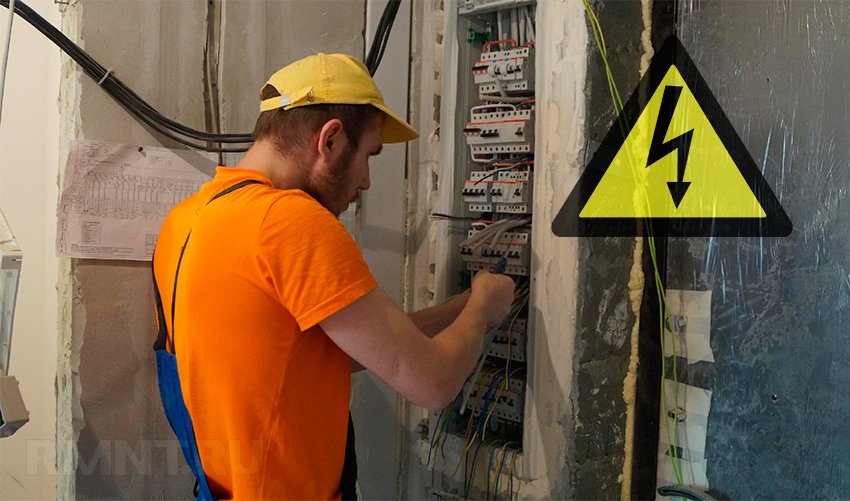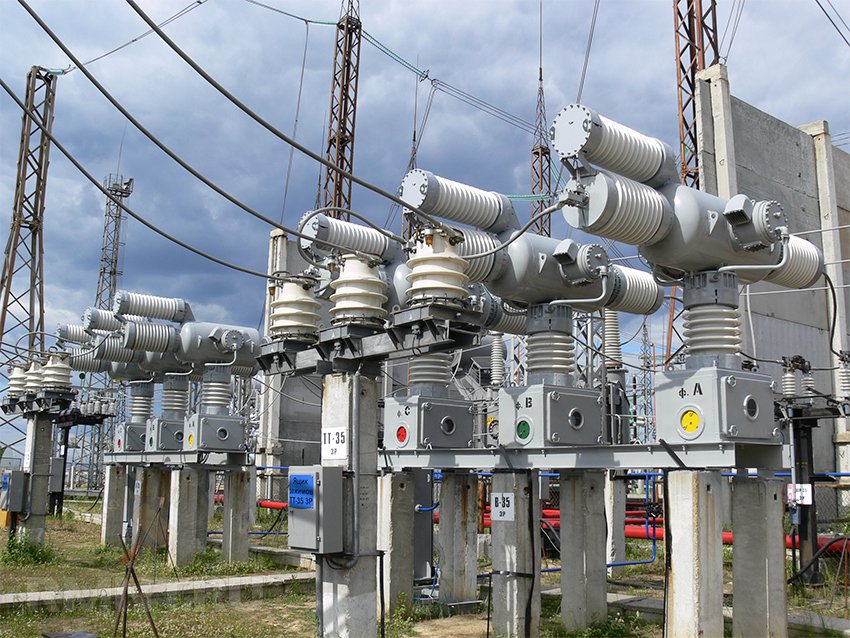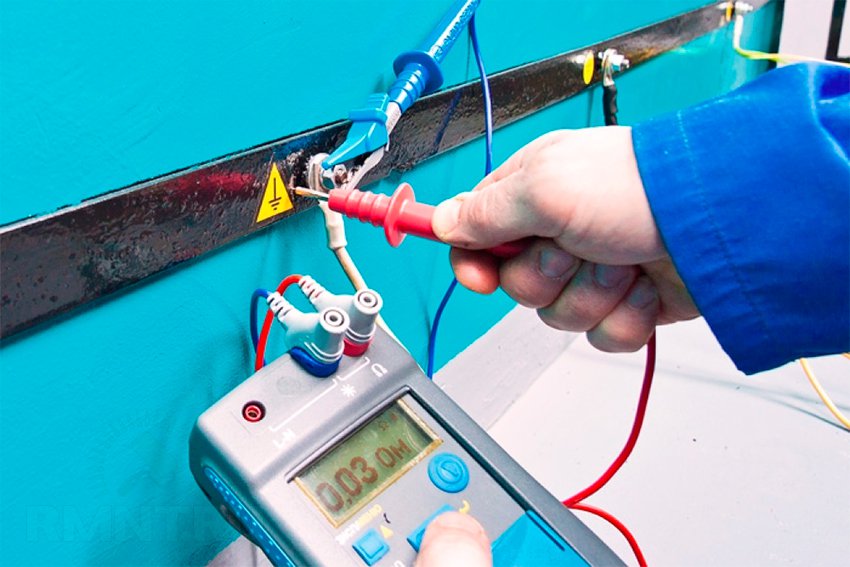Sections of the site
Editor's Choice:
- How to unlock ariston washing machine
- Pros and cons of LED lighting
- Pulse relay: device and connection
- How to calculate the illumination of a room with LED lamps?
- Plastic box - do-it-yourself aesthetic view of electrical wiring
- Electricity consumption of a warm floor: electric and film
- Installing a pump in a well: how to properly install pumping equipment
- Electrician Toolkit Overview
- How to choose a water heater: the most complete list of evaluation criteria
- 1 acoustics on the example of Sven SPS-860 and Realtek ALC889 codec
Advertising
| Electrical safety: what is the difference between grounding and zeroing |
|
Some aspects of electrical safety are not entirely clear to the layman, and this is what distinguishes him from a professional who has access to the installation of electrical networks. Today we will talk about the most important components of any electrification system - grounding and grounding. The role of zeroing in a three-phase networkAny electrical system is built on a three-phase AC network or is part of it. Without delving into the theory too much, we recall the basic definitions of the operation of any three-phase system. Between any two phases taken, a voltage of 380 V occurs 50 times per second. Specifically, at this moment in time, one of the conductors turns into the ground - a source of free electrons, and the other conductor receives these electrons.
The same phenomenon occurs in the other two pairs of phases, but the difference in time between how the phases "switch" is about a third of the oscillation period in one of them. This scheme of work owes its appearance to the most popular type of electrical machines. If you arrange the phases around the circle in the right order, then the occurrence of current in them would also follow in a circle and would be able to push the round core of the engine. In the simplest version of electrical connections, all three phases must be connected at one point, while at a particular moment in time only two of them will be at the peak of power.
The main problem is that the resistance of the working elements (motor windings or heating coils) included in each of the phases cannot be absolutely equal. Therefore, the current in each of the three circuits will always be different, and this phenomenon must be somehow compensated. Therefore, the point of convergence of all three phases is connected to the ground in order to divert the residual electric potential into it. How the ground loop worksAny entrance of a multi-storey building can be modeled according to the same scheme. But the apartments, distributed over the three existing phases, consume electricity at random, and this consumption is constantly changing. Of course, on average, at the point of connection of the house cable at the distribution point (RP), the difference in currents in the phases is no more than 5% of the rated load. However, in rare cases, this deviation can be higher than 20%, and this phenomenon promises serious problems.
If for a moment we imagine that the electric riser, or rather, its frame part, on which all the neutral wires are screwed, turned out to be isolated from the ground, such a high difference between the consumption of apartments in different phases results in the following pattern:
The neutral wire connected to the ground loop serves as a spare source of electrons for just such a case. It helps to eliminate the asymmetry of loads and avoid the occurrence of overvoltages on adjacent branches of a three-phase circuit. The difference between grounding and groundingIf during the operation of a single pair of phases the load on them is not the same, a positive electric potential will certainly arise at the point of convergence. That is, if, when the ground loop breaks, a person grabs the housing of the access shield, he will be shocked, and the strength of this blow will depend on the degree of asymmetry of the loads.
Most electrical machines are designed in such a way that the loads are distributed evenly across all three phases, because otherwise some conductors will heat up and wear out faster than others. Therefore, the phase connection point in some devices is output to a separate fourth contact, to which the neutral conductor is connected. And here the question is: where to get this very zero conductor? If you pay attention to the poles of high-voltage power lines, there are only three wires on them, that is, three phases. And for the transportation of electricity, this is quite enough, because all transformers at step-down substations have a symmetrical load on the windings and are grounded each independently of the others.
And this fourth conductor appears at the very last transformer substations (TS) in the chain of transformations, where 6 or 10 kV turn into the usual 220/380 V, and there is a non-illusory probability of an asynchronous load. At this point, the beginnings of the three windings of the transformer are connected and connected to a common grounding system, and the fourth, neutral wire originates from this point. And now we understand that grounding is a system of rods immersed in the ground, and zeroing is a forced connection of the midpoint to the ground to eliminate dangerous potential and asymmetry. Accordingly, the neutral conductor is connected to the grounding point or closer, and the protective earth wire is connected directly to the ground loop itself.
Types of grounding systemsHave you noticed that the neutral wire in a three-phase cable has a smaller cross section than the rest? This is quite understandable, because not the entire load falls on it, but only the difference in currents between the phases. There must be at least one ground loop in the network, and usually it is located next to the current source: a transformer in a substation. Here, the system requires mandatory zeroing, but at the same time, the neutral conductor ceases to be protective: what happens if zero burns out in the TP is familiar to many. For this reason, there may be several ground loops along the entire length of the power transmission line, and usually this is the case.
Of course, re-grounding, unlike grounding, is not at all necessary, but it is often extremely useful. According to the place where the general and repeated zeroing of the three-phase network is performed, several types of systems are distinguished. In systems called I-T or T-T, the protective conductor is always taken regardless of the source; for this, the consumer arranges its own circuit. Even if the source has its own ground point, to which the neutral conductor is connected, the latter does not have a protective function, and does not contact the consumer's protective circuit in any way.
Systems without grounding on the consumer side are more common. In them, the protective conductor is transferred from the source to the consumer, including through the neutral wire. Such schemes are designated by the prefix TN and one of the three postfixes:
Key Points for WiringSo, how can all this information be useful in practice? Schemes with the consumer's own grounding are, of course, preferable, but sometimes they are technically impossible to implement, for example, in high-rise apartments or on rocky ground. You should be aware that when the neutral and protective conductors are combined in one conductor (called PEN), the safety of people is not a priority, and therefore equipment that people come into contact with must have differential protection.
And here, novice installers make a whole bunch of mistakes, incorrectly determining the type of grounding / neutralizing system and, accordingly, incorrectly connect the RCD. In systems with a combined conductor, the RCD can be installed at any point, but always after the place of combination. This error often occurs when working with TN-C and TN-C-S systems, and especially often if in such systems the neutral and protective conductors do not have the appropriate marking. Therefore, never use yellow-green wires where it is not necessary. Always ground metal cabinets and equipment cases, but not with a combined PEN conductor, on which a dangerous potential occurs when zero breaks, but with a PE protective wire, which is connected to its own circuit.
By the way, if you have your own circuit, it is very, very not recommended to perform an unprotected zeroing on it, unless it is the circuit of your own substation or generator. The fact is that when zero breaks, the entire difference in the asynchronous load in the citywide network (and this can be several hundred amperes) will flow into the ground through your circuit, heating the connecting wire to white. |
New
- I am a big tea lover. I especially respect green
- Ivan-tea with the addition of mint The chemical composition of the plant
- What is useful wheat porridge for the body
- Recipe: Soy Schnitzel - An excellent and tasty substitute for meat during Lent
- How to make ginger tea
- Coconut manna: benefits and harms, recipes with organic product Coconut paste how to use
- "Healthy" vegetable oils - a possible cause of obesity
- Adnexitis: causes, symptoms and treatment of the disease
- Herpes during pregnancy. Types, symptoms, treatment. Treatment of herpes during pregnancy Ointment for herpes during pregnancy
- What is pink catharanthus and how to care for it?

















